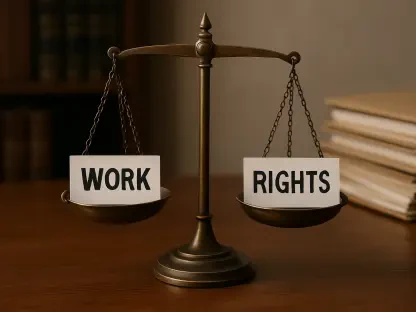With evolving workplace regulations and the increasing relevance of diversity, equity, and inclusion (DEI) initiatives, organizations must navigate a complex landscape to ensure compliance with anti-discrimination laws. Recent guidance from the U.S. Equal Employment Opportunity Commission (EEOC) and the Department of Justice (DOJ) underscores these challenges, highlighting the nuanced interplay between promoting DEI and adhering to legal mandates.
EEOC and DOJ’s Stance on DEI
Legal Parameters for DEI Programs
The guidance released by the EEOC and DOJ emphasizes that DEI programs must comply with the legal framework established by Title VII of the Civil Rights Act of 1964. This Act prohibits discrimination based on race, sex, and other protected characteristics. In essence, DEI initiatives must be designed in a manner that does not inadvertently create discriminatory practices.
One critical aspect of this guidance pertains to practices such as limiting, segregating, and classifying workers in ways that could be discriminatory. Additionally, the use of quotas, attempting to achieve workforce balance based on protected traits, or enacting disparate treatment in areas such as hiring, firing, promotion, compensation, and training opportunities fall under scrutiny.
Furthermore, the guidance underscores that discriminatory actions related to exclusion from mentoring or sponsorship programs are equally significant. This could imply that DEI initiatives promoting such programs need thorough evaluation to ensure they do not breach anti-discrimination laws.
Impact on Employee Resource Groups
Employee resource groups (ERGs), often a cornerstone of DEI programs, also fall within the purview of the EEOC’s guidance. These groups are meant to provide support and networking opportunities for employees sharing common characteristics. However, if the membership policies of these groups inadvertently limit access based on race, sex, or other protected traits, they could be deemed illegal.
These guidelines call for a re-evaluation of how ERGs are structured and governed. The goal is to ensure that while they provide valuable support and networking avenues, they do not exclude members in ways that affect employment status or opportunities. Thus, ERGs must be inclusively established, reflecting diversity without exclusionary practices.
Historical Context and Current Implications
Reflections from the Past Administration
This new guidance aligns with the priorities highlighted during the second Trump administration, which had taken a strong stance against certain DEI initiatives through executive orders. These orders challenged the legality of private sector DEI programs, prompting courts to scrutinize these actions. Notably, this period saw a rise in reverse discrimination lawsuits, indicating the complex nature of implementing DEI without crossing legal boundaries.
Employers are now compelled to reassess their DEI strategies to ensure they align with legal stipulations. The scrutiny that characterized the previous administration’s policies continues to influence current regulatory practices, reinforcing the importance of compliance in DEI efforts. This historical context serves as a cautionary tale for organizations in their ongoing DEI endeavors.
Reverse Discrimination Lawsuits
The surge in reverse discrimination lawsuits has further magnified the complexities surrounding DEI initiatives. These lawsuits contend that certain DEI practices, while intending to promote inclusion, inadvertently discriminate against majority groups. Such legal challenges have made it clear that well-intentioned DEI programs must be meticulously crafted to avoid running afoul of anti-discrimination laws.
This trend necessitates a careful examination of all DEI components, from employee selection processes to the structuring of mentorship programs. Employers are encouraged to foster genuine inclusivity without engaging in practices that could be interpreted as discriminatory towards any group, balancing the promotion of diversity with legal compliance.
Navigating the Legal Landscape
Technical Assistance Documents
To navigate these intricacies, the EEOC has provided detailed technical assistance documents aimed at guiding employers in identifying and mitigating potentially discriminatory DEI practices. These documents serve as essential tools for organizations to align their DEI strategies with federal anti-discrimination laws.
Law firms and employers are directed to scrutinize these guidelines meticulously. The technical assistance offers a roadmap for identifying areas of potential non-compliance, emphasizing proactive measures in structuring DEI initiatives. Employers must stay abreast of these documents to anticipate enforcement activities and align their DEI strategies accordingly.
Anticipating Court Interpretations
Legal analysts predict that the court interpretations of these guidelines will present a range of complications, reflecting the broader uncertainties and emerging complexities in DEI-related legal matters. This unpredictable environment underscores the importance of staying informed and prepared for any potential legal challenges to DEI initiatives.
Employers must be vigilant, ensuring that their DEI programs are not only compliant but also adaptable to evolving legal interpretations. This proactive approach involves regular assessments, consultations with legal experts, and a willingness to modify programs in response to new regulatory or judicial developments.
Ensuring Compliance for Inclusive Practices
Avoiding Legal Pitfalls
Overall, the released documentation sheds light on potential legal pitfalls within DEI initiatives, urging employers to meticulously evaluate their programs. Legal experts suggest comprehensive examination of the EEOC-DOJ guidance to preemptively address possible legal issues. These proactive steps are critical in securing DEI efforts that are both effective and legally compliant.
Employers should invest in ongoing education and training for their management teams, ensuring that DEI strategies are developed and implemented with a clear understanding of legal compliance requirements. This approach not only safeguards against potential lawsuits but also fosters an inclusive, equitable workplace culture.
Aligning DEI Strategies with Legal Compliance
As workplace regulations evolve and the importance of diversity, equity, and inclusion (DEI) initiatives grows, organizations must carefully navigate a complex environment to remain compliant with anti-discrimination laws. Recent guidance issued by the U.S. Equal Employment Opportunity Commission (EEOC) and the Department of Justice (DOJ) emphasizes these challenges, focusing on the intricate balance between fostering DEI efforts and adhering to legal mandates.
This guidance highlights the need for businesses to develop comprehensive strategies that integrate DEI principles without infringing upon existing legal frameworks. By doing so, organizations can address both their ethical obligations and legal responsibilities, promoting a more inclusive work environment while avoiding potential legal pitfalls. Businesses must stay informed about the latest regulations and best practices to ensure that their DEI initiatives not only support a diverse and equitable workforce but also comply with the stringent requirements set forth by these federal agencies.









